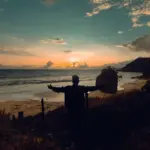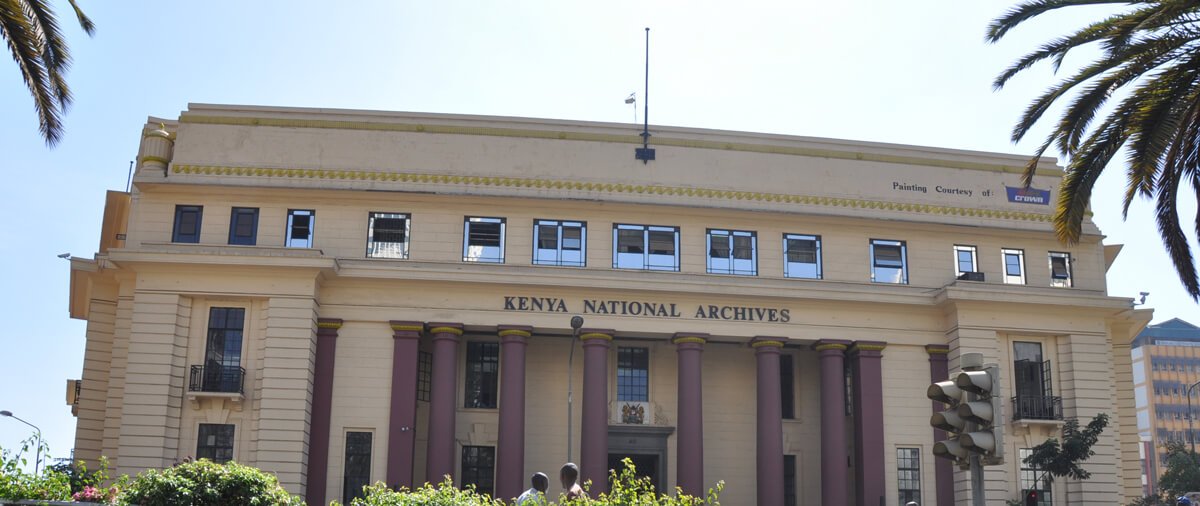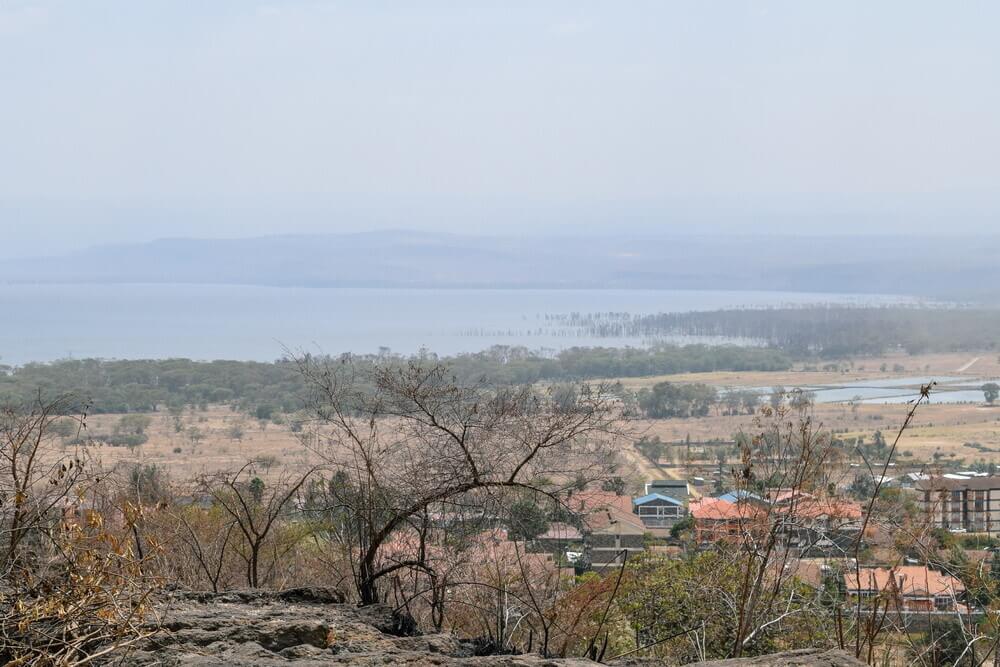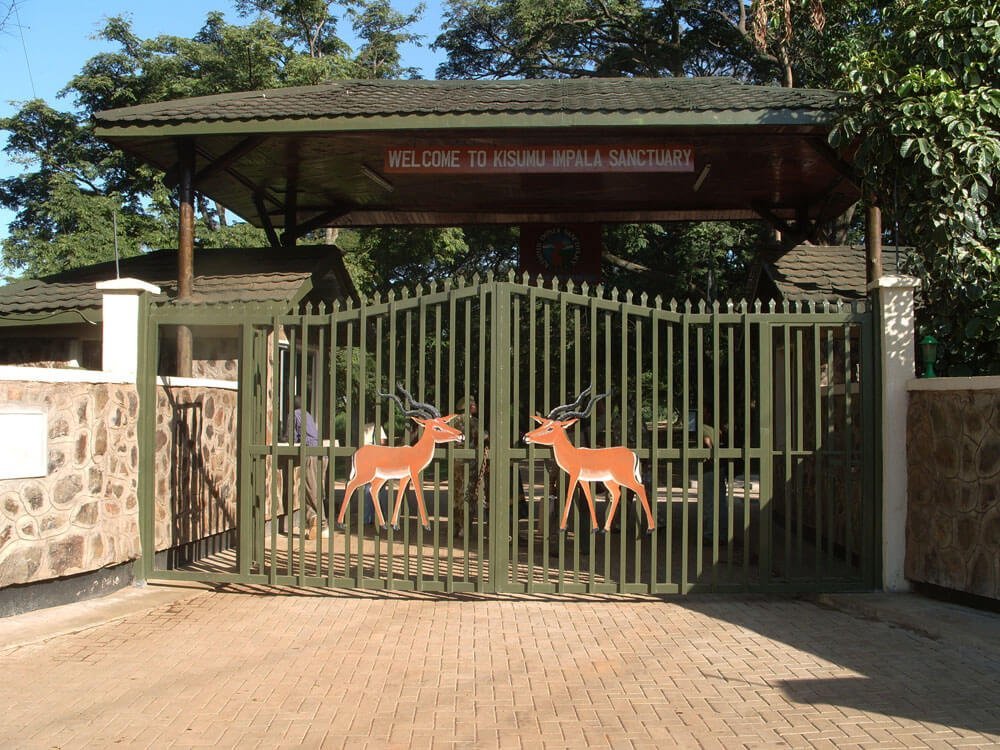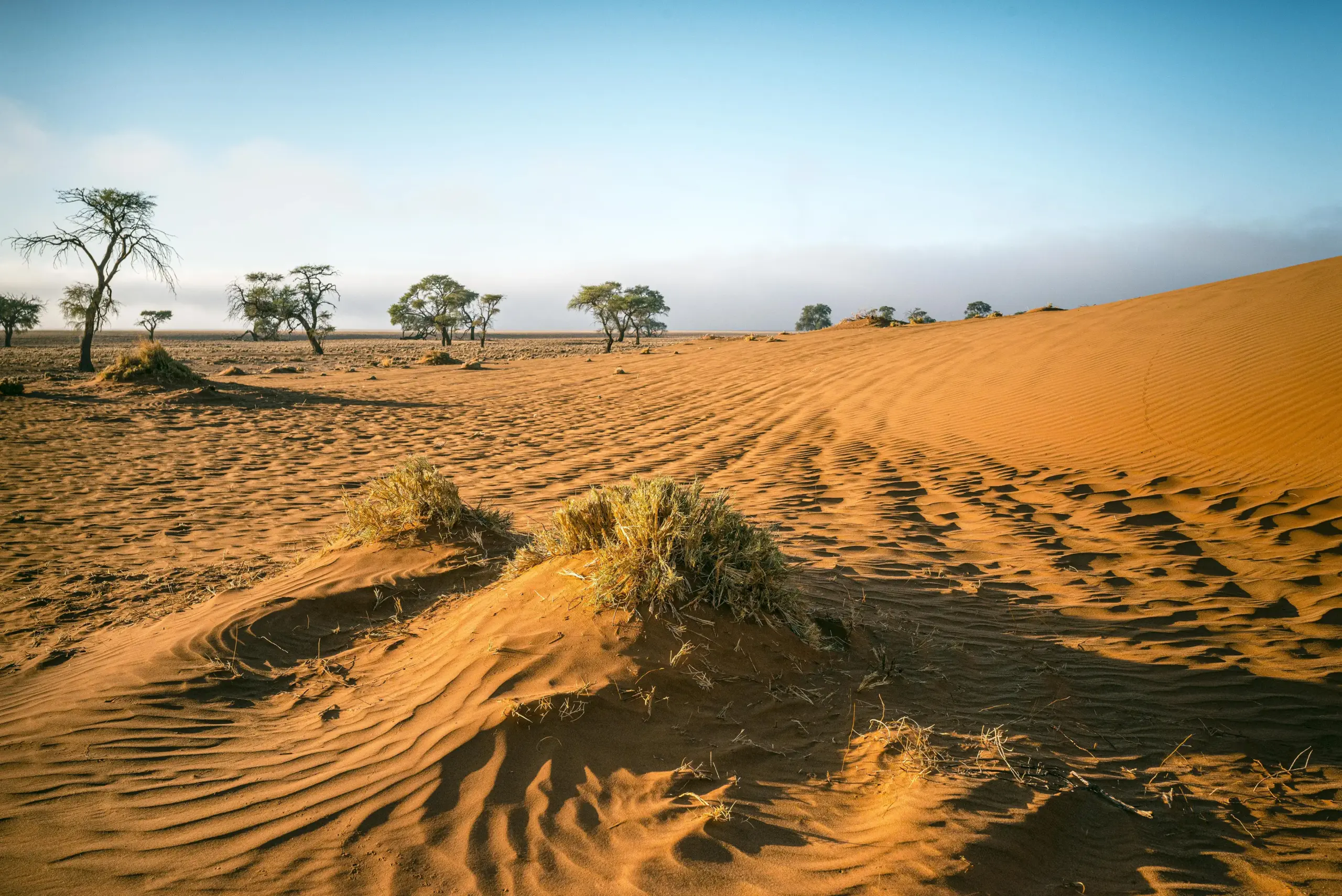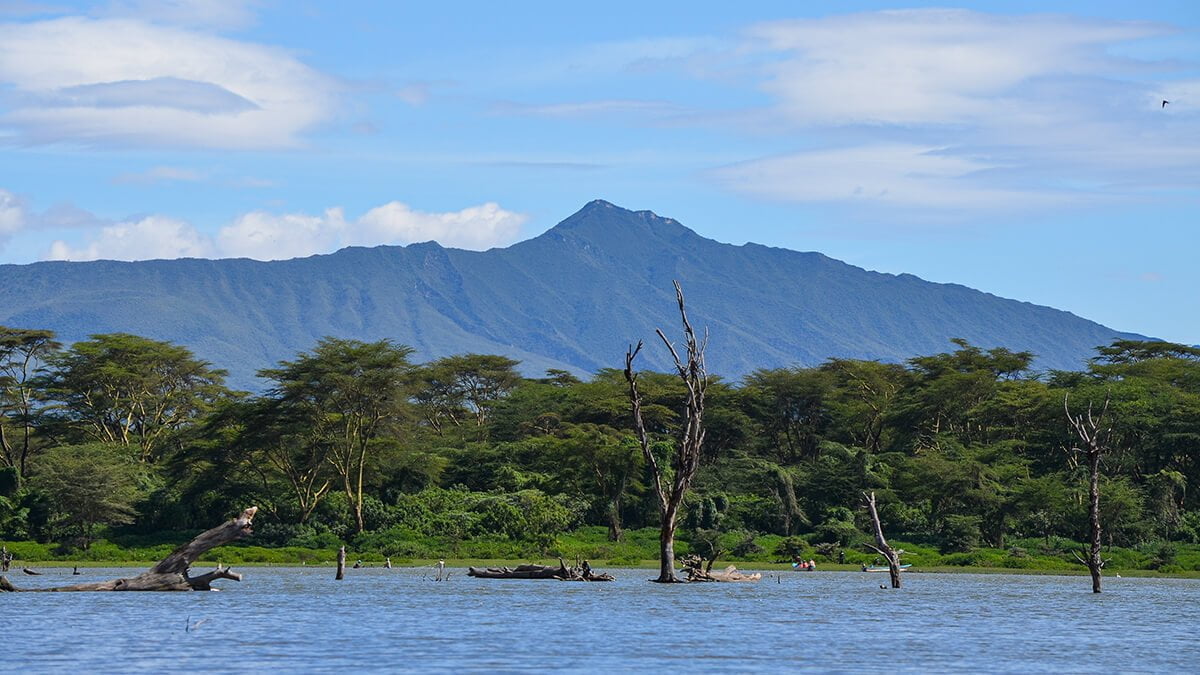Lake Turkana is one of the world’s natural wonders, which lies at Kenya’s far Northern border. The lake is located in the Kenyan Rift Valley, and it’s the world’s largest alkaline and permanent desert lake.
The massive inland sea has a surface area of 6,405 sq. km, and by volume, it’s the fourth-largest salt lake and ranks 24th amongst all lakes in the world. This single water mass is over 32 km wide, 250 km long, and has a varying elevation of between 375 meters and 914 meters.
The History of Lake Turkana
The lake has one of the longest living histories on the planet, and recent fossil evidence unearthed at Koobi Fora has led to the lake being referred to as ‘The Cradle of Mankind’. The site lies at the core of Sibiloi National Park, an Eden of stark beauty and prehistoric hardened forests.
The Origin of the Name Turkana
On 6 March 1888, the water body was christened Lake Rudolf by Count Sámuel Teleki de Szék, a Hungarian, and his partner Lieutenant Ludwig Ritter Von Höhnel, an Austrian, in honor of Crown Prince Rudolf of Austria. They were the first Europeans recorded to have visited the lake after an extensive safari across East Africa. The lake retained its European name during the colonial period of the British in East Africa. In 1975 after Kenya’s independence, the then president, Mzee Jomo Kenyatta, renamed it after the Turkana, the prevalent tribe.
About Lake Turkana

Lake Turkana has three main islands; North Island, South Island, and Central Island, an active volcano. River Omo, River Turkwel, and River Kerio feed the lake. The lake has no outflow but loses water only by evaporation. The aridity, temperature, and geographical inaccessibility see the lake preserve its wild charm.
Lake Turkana Eastern shores are mainly rocky, and Mount Kulal, an extinct volcano with a height of 2,285 meters, is located in this area. In the Northern and Western shores, one can encounter spits, flats, and dunes.
Lake Turkana and its national parks are UNESCO-listed world heritage sites. Central Island National Park and South Island National Park lie in the lake, while Sibiloi National Park is located on the lake’s eastern shore.
The lake is commonly known as the Jade Sea due to its incredible turquoise color is seen approaching from a distance. The color results from algae that rise to the surface in calm weather. The Turkana people refer to the lake as Anam Ka’alakol, meaning ‘the sea of many fish’.
The lake region is currently inhabited by the Turkana, Gabbra, Rendille, Daasanach, Koke, Surma, Mursi, Molo, Nyagatom, and Karp people.
Wildlife at Lake Turkana
The desert lake is a significant water source that attracts various wildlife, from birds to reptiles to grazers. The lake is home to hundreds of bird species native to Kenya, including migrating birds. The birds feed on the plankton masses and the fish in the lake.
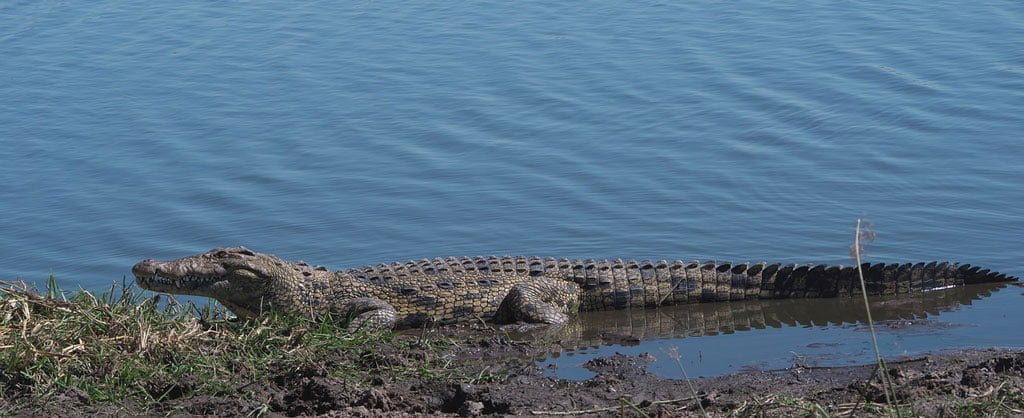
Some birds frequent to the lake are the common sandpiper, the wood sandpiper, and the little stint. Like many other water birds, the white-breasted cormorant ranges over the lake and the African skimmer nests in the banks of Central Island. Heuglin’s bustard is common in the lake’s eastern region, and the Greater Flamingo wades in the shallows. Hunting raptors included Osprey, African Fish Eagles, Marsh Harriers, and local rarities such as Skimmers.
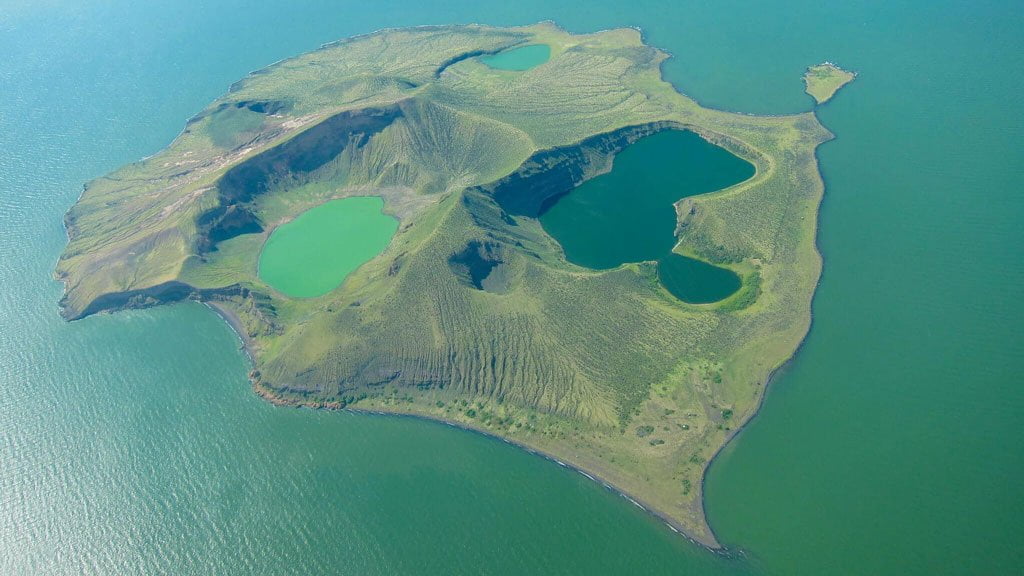
The lake contains the world’s large population of crocodiles and profuses in water turtles, specifically on Central Island. The Nile crocodiles are abundant on the flats and carpet vipers and scorpions on the rocky shores.
Over the dry grassland wanders a puny population of grazing mammals and predators. The grazers are primarily Burchell’s zebra, Grevy’s zebra, the beisa oryx, the topi, Grant’s gazelle, and the reticulated giraffe. The cheetah and the lion prey on the mammals.
What to do and see at Lake Turkana
The harsh conditions, inaccessibility, wildlife, spectacular scenery, archaeological treasures, and remarkable cultures make Turkana an ultimate Kenyan destination for adventure seekers.
Both the east and west shores of Lake Turkana present exceptional places of interest. At the southeast tip of the lake, there lies a tiny oasis of Loiyangalani, which fascinates many diverse travelers. Its palm groves and persistent wind offer a respite from the searing heat. There is an excellent basic lodge and campsite here.
Most safari operators and companies provide truck trips and camel safari to this area and further south. Loiyangalani is a magnificent location to explore, either by climbing the nearby Mount Kulal or by boat to the South Island National Park.
The El Molo Bay is an ideal place to spot birdlife and crocodiles. It is home to Kenya’s smallest tribe, the El Molo. One can also discover and enjoy their native culture. For a more adventurous experience, visit the Sibiloi National Park. The park comes as an astonishment after a long desert journey with ample open green and game. Topis, zebras, giraffes, hippos, ostriches, and the sporadic lions and cheetahs have been spotted in the park.
In western Turkana, specifically in Kalokol village, there is a basic fishing lodge for people looking to catch an esteemed Nile Perch. Approximately 60 km further north lies the stunning Eliye Springs, large crocodile populations, and several small Turkana villages.
Central Island National Park is an idyllic place to spend a day exploring. A hike around the volcanic crater rims is a supreme way to spend a morning or an afternoon. Each of the three crater lakes has its own unmatched ecology.
One can spot flamingos, crocodiles, and plenty of water birds on the narrow ridges across the island’s spine. The outer slopes of this upthrust volcanic cone are breeding colonies for many nesting pelicans, heron, cormorant, gulls, and heron. A slow canoe drifts around the island water birds is fantastic for birdwatching.
Sitting by a campfire on Central Island, listening to the soft lap of water on the shore as the sunset gives way to a stunning starscape overhead is the best way to spend a night.
Getting to Lake Turkana
Lake Turkana’s east and west shores are accessed separately and are physically separated by the immense uncrossable Suguta Valley south of the lake. The east shore is accessed via Marsabit and Maralal with Loiyangalani, a small oasis town, as the central point. The west shore can be approached via Kitale with Lowdar as the central point of access.
The lake is a two-day drive from Nairobi. The trip winds through other scenic destinations in Kenya, and travelers consistently encounter Rendille camel caravans and pass by nomadic encampments and tiny villages along the way. Travelers often make resting stops at Samburu, Maralal, or Marsabit.
There are airstrips on the east and west shores for chartered flights. The flights provide breath-taking panoramas of the Suguta Valley and offer a birds-eye view of the lake itself. Lake Turkana is one of the most remote destinations in Kenya, but one that recompenses the bold adventurer with opulent rewards. It should be visited as part of a professionally organized safari.
Getting around Lake Turkana
There are very few distinct roads around the lake. One can explore the lakeshore on foot but carry plenty of clean water and have a proficient sense of direction. The best way to explore the lake is by using boats available for hire in the villages along the shores. A local guide is advisable.
Accommodation at Lake Turkana
Kalokol village and Eliye Springs at the shores of Lake Turkana, Lodwar, and Lokichogio in the far northwest have excellent accommodation facilities. In more remote places like Lokichar, Kapedo, Katilu, Kakuma, or Nariokotome, one will have to depend on simple local lodgings, basic guest facilities of church missions, or your own camping equipment. Space is limited in many places, and food needs prior notice for preparation.
